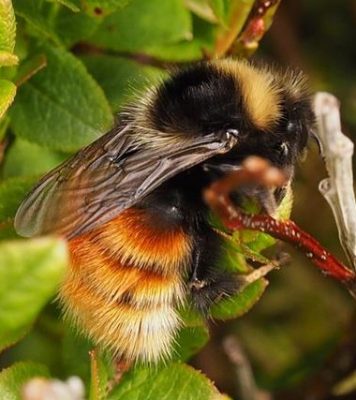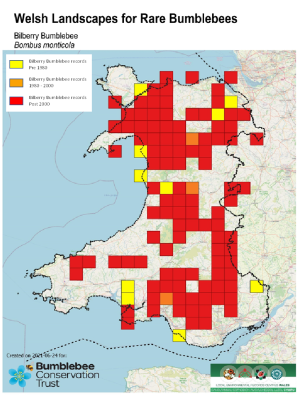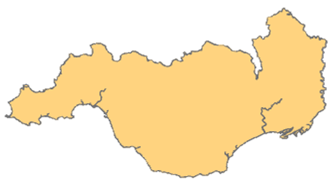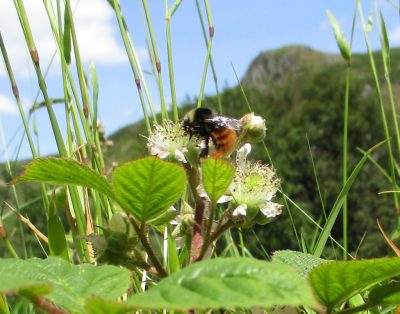Have you seen this Bee?
The Bilberry Bumblebee (Bombus monticola) is one of our most beautiful bumblebees! As its name suggests, it mostly occurs in areas where Bilberry grows on the uplands and heathlands of the UK, including Wales. For more information please see the BBCT Species page.
Why are we looking for it?
Evidence suggests that the Bilberry Bumblebee is declining in the UK, most likely as a result of habitat loss. In Wales, records show a reduction in the Bilberry Bumblebee’s range, indicating a similar decline to the rest of the UK.
We urgently need more records of where the Bilberry Bumblebee occurs and that’s where you come in! Every recorded sighting contributes to our understanding and future conservation of the species.
How can you help?
As part of ‘Skills for Bees Cymru’, a three year project delivered by the Bumblebee Conservation Trust, we are launching the All Wales Bilberry Bumblebee Hunt (#BBBHunt), in which anyone can take part, without any particular specialist knowledge. We are asking people to submit their sightings of the Bilberry Bumblebee, whilst out and about in Wales in 2023.
Identifying the Bilberry Bumblebee
The Bilberry Bumblebee is a very striking insect with a bright orangey-red abdomen (almost to its waist) and a yellow collar behind it’s head. Look here for a 5 minute video on the key identification features and how to tell it apart from similar species.
Here is also a video of Bilberry Bumblebee captured by Tim Griffiths.
Finding the Bilberry bumblebee
As its name suggests, this species is associated with areas where there are good stands of Bilberry, which flowers from around late April to early June. The queens tend to emerge when the bilberry is in flower with workers appearing around May and June and males a bit later towards July and August. The queens especially, may be found foraging on Bilberry although the workers and males will be attracted to other flowers including clovers, bramble, heather and bird’s-foot trefoil.
To help you with your search we have created two interactive maps – one for Bilberry and one for the Bilberry bumblebee.
If you look at the maps side by side you can focus on areas which have Bilberry records but no Bilberry Bumblebee records! You may find a new spot for the bee! Basically, upland areas with Bilberry and other flowers plus coastal heathlands are all worth a look!
Submitting your records
Please submit your records using the LERC Wales App or you can submit online into one of our Local Environmental Record Centres (see map to find your Local Environmental Record Centre and a link to their webpage).
Some LERCs have also identified some priority grid squares for recorders to hunt for the bee. These can be found by clicking on the LERC links on the map.
Please try to submit a photograph of the bee with the record as that helps us to verify it as correct!
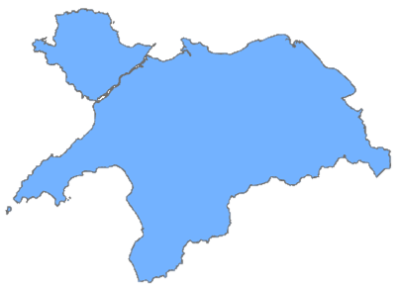
We really hope you’ll be inspired to get involved and take keep an eye out for this wonderful species in Wales this summer! Good luck and if you have questions about bumblebees in Wales, contact Clare Flynn, Skills for Bees Cymru project Officer.

